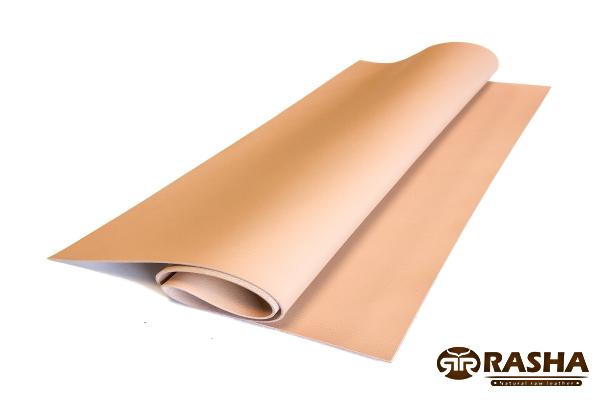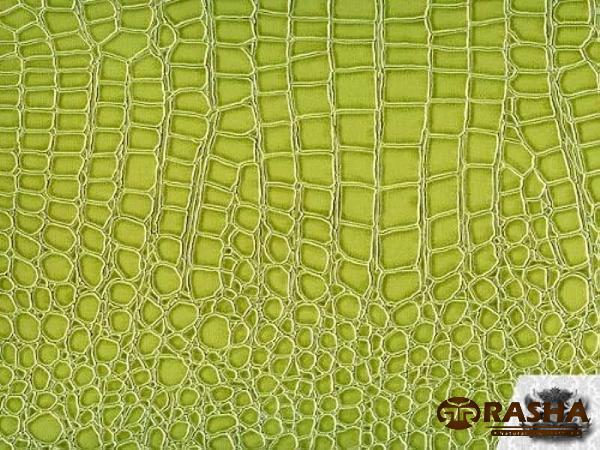The debate between vegan leather and real leather has gained significant traction in recent years, as consumers increasingly seek sustainable and cruelty-free alternatives. Vegan leather, also known as faux leather, is a synthetic material created to resemble the look and feel of real animal leather without using any animal products. Real leather, on the other hand, is made from animal hide, most commonly sourced from cows, pigs, and goats. This article aims to provide a comprehensive analysis of the differences between vegan leather and real leather, considering their environmental impact, production processes, durability, and ethical considerations. Environmental Impact: One of the primary concerns in the current global climate crisis is the environmental impact caused by various industries.
leather
 Leather production, specifically the tanning process, has a significant ecological footprint. The process involves the use of toxic chemicals, including chromium, which can contaminate waterways and pose health risks to workers and surrounding communities. Additionally, the livestock industry contributes to deforestation, greenhouse gas emissions, water pollution, and excessive land and water usage. Vegan leather, often made from materials like polyurethane (PU) and polyvinyl chloride (PVC), generally presents a more sustainable alternative. Synthetic leather production requires fewer resources, emits fewer greenhouse gases, and reduces pollution compared to the traditional leather industry. However, it’s important to consider the implications of using petroleum-based products in vegan leather production, as petroleum extraction and processing also have significant environmental impacts. Production Processes: The production of real leather involves a multi-step process that begins with animal farming and ends with the tanning of animal hides. The quality and durability of real leather heavily depend on factors such as animal breed, hide selection, and tanning technique.
Leather production, specifically the tanning process, has a significant ecological footprint. The process involves the use of toxic chemicals, including chromium, which can contaminate waterways and pose health risks to workers and surrounding communities. Additionally, the livestock industry contributes to deforestation, greenhouse gas emissions, water pollution, and excessive land and water usage. Vegan leather, often made from materials like polyurethane (PU) and polyvinyl chloride (PVC), generally presents a more sustainable alternative. Synthetic leather production requires fewer resources, emits fewer greenhouse gases, and reduces pollution compared to the traditional leather industry. However, it’s important to consider the implications of using petroleum-based products in vegan leather production, as petroleum extraction and processing also have significant environmental impacts. Production Processes: The production of real leather involves a multi-step process that begins with animal farming and ends with the tanning of animal hides. The quality and durability of real leather heavily depend on factors such as animal breed, hide selection, and tanning technique.
Specifications of leather
 The entire process is time-consuming, complex, and involves skilled labor. Vegan leather manufacturing, on the other hand, utilizes various synthetic materials and processes. Polyurethane-based vegan leather is created by coating a fabric base with a layer of polyurethane and then embossing it to resemble animal hide. Polyvinyl chloride vegan leather is produced by applying PVC to a fabric base. Both methods involve chemical treatments to create the desired texture, appearance, and durability. Durability and Longevity: Real leather is renowned for its durability and long-lasting nature. With proper care, genuine leather products can last for decades, making them a popular choice for consumers seeking longevity and high-quality goods. Genuine leather develops a distinctive patina over time, adding to its aesthetic appeal. However, the durability of leather products can vary based on factors such as tanning quality and treatment. Vegan leather’s durability depends on the specific manufacturing process and materials used. While some vegan leather products can emulate real leather’s durability, they generally tend to have a shorter lifespan. Polyurethane-based vegan leather is often less durable than PVC-based vegan leather. However, advancements in technology are continuously improving the strength and longevity of vegan leather. Ethical Considerations: Ethical concerns surrounding leather primarily revolve around the treatment of animals involved in the leather production process. The demand for leather has led to the breeding and slaughtering of animals solely for the purpose of acquiring their hides.
The entire process is time-consuming, complex, and involves skilled labor. Vegan leather manufacturing, on the other hand, utilizes various synthetic materials and processes. Polyurethane-based vegan leather is created by coating a fabric base with a layer of polyurethane and then embossing it to resemble animal hide. Polyvinyl chloride vegan leather is produced by applying PVC to a fabric base. Both methods involve chemical treatments to create the desired texture, appearance, and durability. Durability and Longevity: Real leather is renowned for its durability and long-lasting nature. With proper care, genuine leather products can last for decades, making them a popular choice for consumers seeking longevity and high-quality goods. Genuine leather develops a distinctive patina over time, adding to its aesthetic appeal. However, the durability of leather products can vary based on factors such as tanning quality and treatment. Vegan leather’s durability depends on the specific manufacturing process and materials used. While some vegan leather products can emulate real leather’s durability, they generally tend to have a shorter lifespan. Polyurethane-based vegan leather is often less durable than PVC-based vegan leather. However, advancements in technology are continuously improving the strength and longevity of vegan leather. Ethical Considerations: Ethical concerns surrounding leather primarily revolve around the treatment of animals involved in the leather production process. The demand for leather has led to the breeding and slaughtering of animals solely for the purpose of acquiring their hides.
buy leather
 This raises ethical questions about animal welfare and the inherent cruelty within the fashion industry. Vegan leather provides an ethical alternative, as it eliminates the need to harm or exploit animals. By using synthetic materials, vegan leather prevents the suffering of animals and aligns with the principles of cruelty-free fashion. However, it’s crucial to note that the production of synthetic materials involves its own set of ethical considerations, such as the use of petroleum-based products or potential exploitation in labor-intensive manufacturing processes. Affordability and Accessibility: Real leather products are generally perceived as luxury goods due to their durability, quality, and higher production costs. The price of genuine leather items reflects the complexity of the tanning process and the limited availability of high-quality, ethically-sourced hides. This, however, means that real leather may not be accessible or affordable for everyone. Vegan leather, being a more easily replicable material, is often more affordable and accessible to a wider range of consumers. The mass production capabilities of synthetic materials allow for a broader market reach, making vegan leather a popular choice for affordable fashion and accessories. Conclusion: The vegan leather vs. real leather debate encompasses a wide range of considerations, including the environmental impact, production processes, durability, ethical implications, affordability, and accessibility. As the world becomes more conscious of sustainability and ethical consumption, vegan leather offers a viable alternative to traditional leather. However, it’s important to acknowledge the nuances and complexities within each material’s production and consider individual factors, such as personal preferences, intended use, and budget, when making purchasing decisions. Ultimately, a balance between environmental consciousness, ethical considerations, and personal needs should guide the choice between vegan leather and real leather.
This raises ethical questions about animal welfare and the inherent cruelty within the fashion industry. Vegan leather provides an ethical alternative, as it eliminates the need to harm or exploit animals. By using synthetic materials, vegan leather prevents the suffering of animals and aligns with the principles of cruelty-free fashion. However, it’s crucial to note that the production of synthetic materials involves its own set of ethical considerations, such as the use of petroleum-based products or potential exploitation in labor-intensive manufacturing processes. Affordability and Accessibility: Real leather products are generally perceived as luxury goods due to their durability, quality, and higher production costs. The price of genuine leather items reflects the complexity of the tanning process and the limited availability of high-quality, ethically-sourced hides. This, however, means that real leather may not be accessible or affordable for everyone. Vegan leather, being a more easily replicable material, is often more affordable and accessible to a wider range of consumers. The mass production capabilities of synthetic materials allow for a broader market reach, making vegan leather a popular choice for affordable fashion and accessories. Conclusion: The vegan leather vs. real leather debate encompasses a wide range of considerations, including the environmental impact, production processes, durability, ethical implications, affordability, and accessibility. As the world becomes more conscious of sustainability and ethical consumption, vegan leather offers a viable alternative to traditional leather. However, it’s important to acknowledge the nuances and complexities within each material’s production and consider individual factors, such as personal preferences, intended use, and budget, when making purchasing decisions. Ultimately, a balance between environmental consciousness, ethical considerations, and personal needs should guide the choice between vegan leather and real leather.










Your comment submitted.